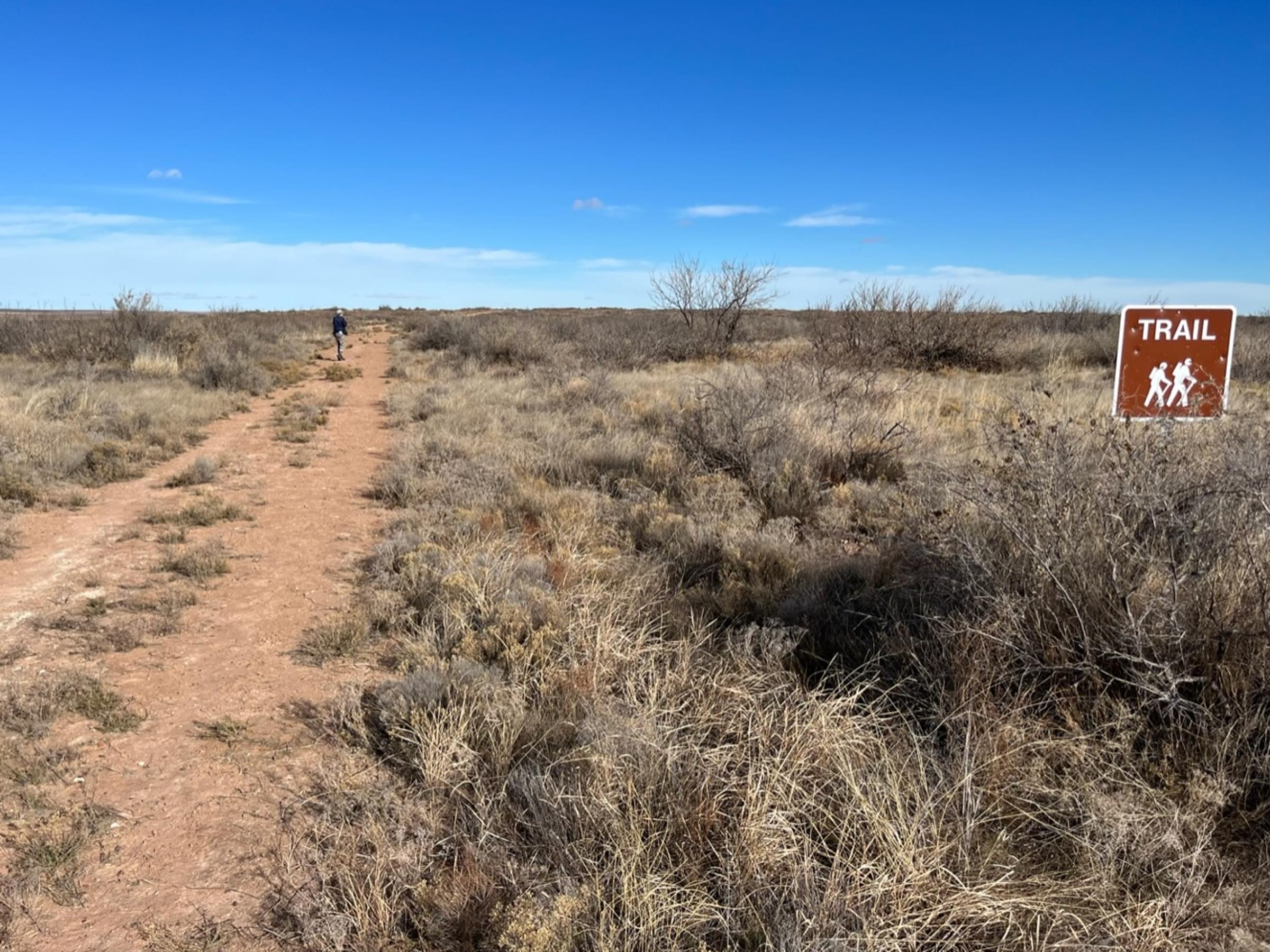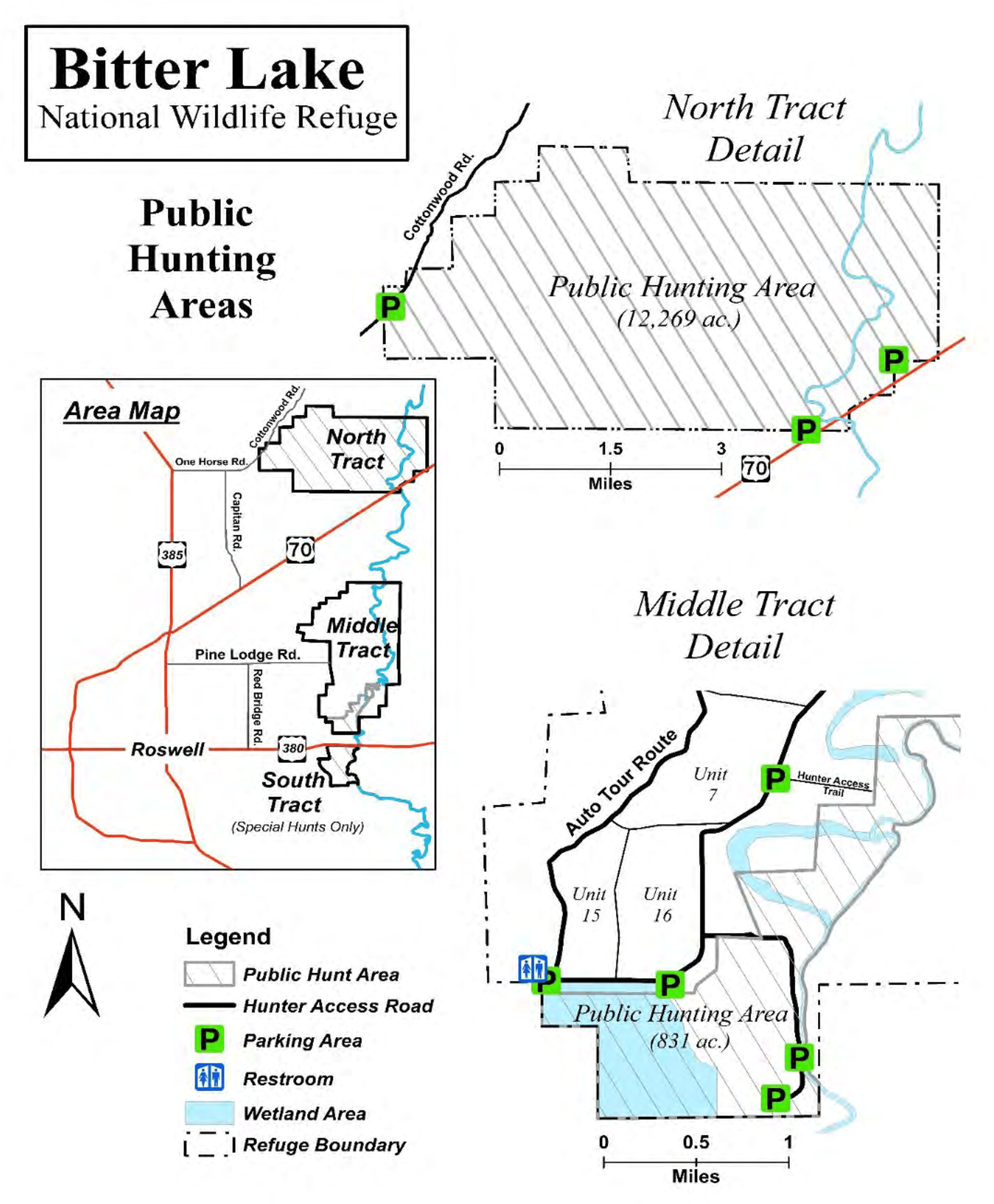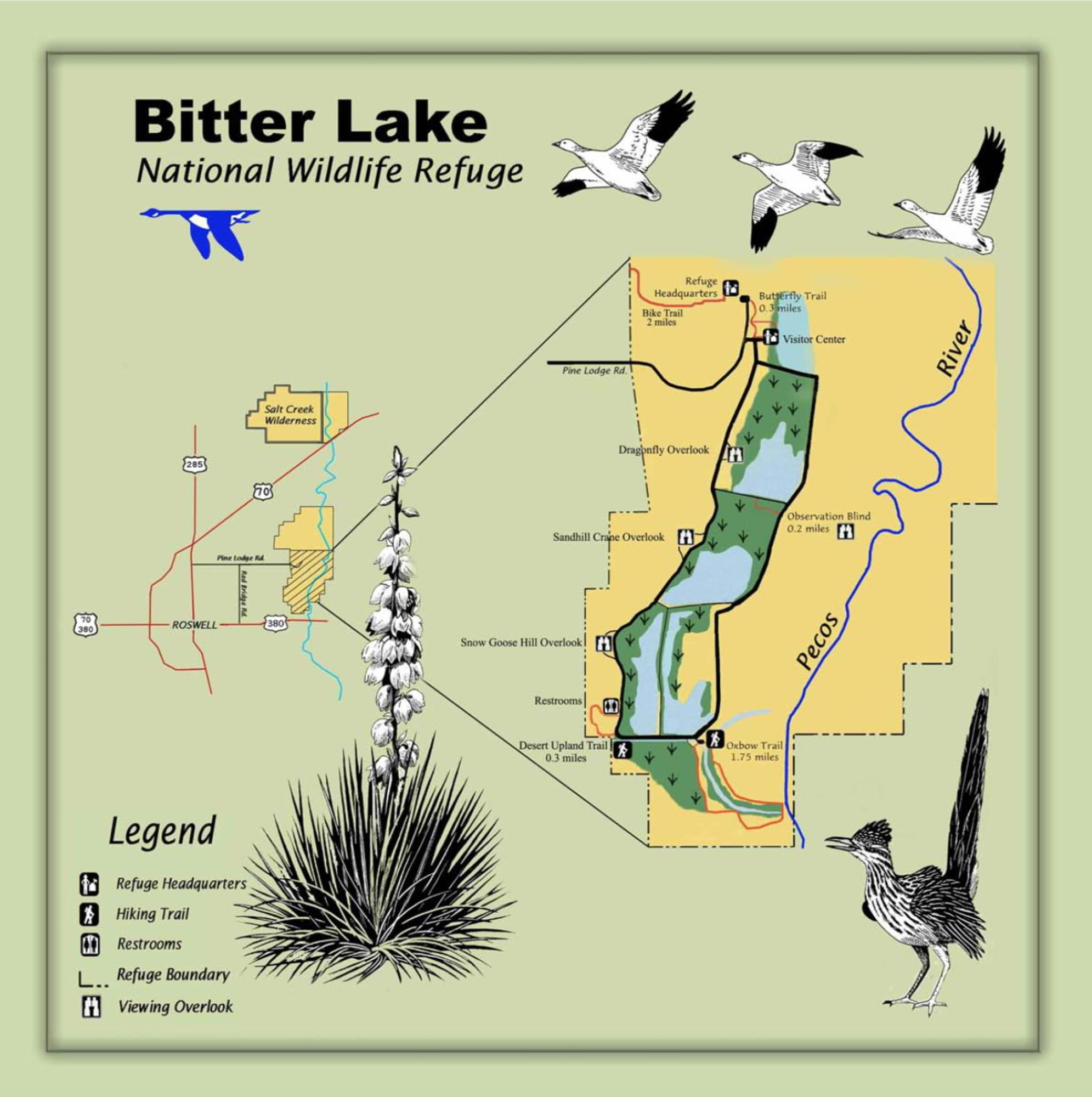Bitter Lake NWR--North Tract, East of Pecos River

Bitter Lake NWR--North Tract, East of Pecos River
Acme, New Mexico 88201
Bitter Lake National Wildlife Refuge Official WebsiteBitter Lake National Wildlife Refuge Important Bird Area webpage
Friends of Bitter Lake National Wildlife Refuge webpage
Bitter Lake National Wildlife Refuge map
Tips for Birding
Although this hotspot, being east of the Pecos, lies fully outside the North Tract’s wilderness area, no motorized vehicles are allowed; unlike in the wilderness area, bicycles are allowed. To access the hotspot, park in the small dirt parking area on the north side of US-70 (approximately 11 miles from the intersection of US-70 with US-285). The parking area (shown most clearly on hunt maps and on the “Map” page of the Refuge website) is lower than the highway and can be a mud hole requiring 4wd to exit if the weather has been wet. Step over the pipe opening in the barbed-wire fence on the north side of the parking area and head toward the bulletin board in front of you. To the left of this is an old two-track dirt road. Take this north. After less than a mile, there is another, even less-apparent two-track which leads four-tenths of a mile to the Pecos. You can continue up the north-south road, which progressively disappears, for another mile and a half to the north boundary of the tract, or if you hike to the Pecos, make a circuit back down the east bank of the river and then east to the parking area. Either way, you are often hiking through saltgrass and alkali sacaton so dense it’s difficult to spot the rattlesnakes before they sense you. Short-grass prairie and Chihuahuan Desert scrub are the dominant vegetation groups. Alkali sacaton, saltgrass, snakeweed, gypsum grama, sotol, and low-growing mesquite appear to be the most common plants, with salt cedar and phragmites on the banks of the Pecos. There are no large wetland areas in the North Tract as there are in the Middle Tract of the Refuge, so waterbird observations will be limited to the river and to flyovers.
Trespass cattle are a common sight east of the Pecos. Yet, hunting is allowed in the hotspot area, and it is advisable to be aware of hunting seasons. Do not assume hunting days and times are the same as in the Middle Tract. Unfortunately, as New Mexico Game and Fish posts its calendar by species rather than by area (the hotspot being in Hunt Unit 32), a call to the Refuge may be required to find out if any hunting is occurring at the time of your visit.
There are no garbage cans, potable water, or toilets of any kind in the North Tract.
About this Location
This is one of two hotspots in the Refuge’s North Tract. The Pecos River runs north to south through the eastern portion of this tract, being joined by the ephemeral Salt Creek toward the tract’s southeast corner. The river courses thereby define 3 North Tract areas:
- east of the Pecos;
- west of the Pecos and south of Salt Creek; and
- west of the Pecos and north of Salt Creek.
The latter two areas are overlaid by an administrative differentiation, with all but a north-south strip along the west bank of the Pecos being wilderness. Some maps incorrectly show the area east of the river as being Forest Service land.
About Bitter Lake National Wildlife Refuge
See all hotspots at Bitter Lake National Wildlife Refuge
Bittle Lake National Wildlife Refuge has been designated as an Important Bird Area.
Bitter Lake National Wildlife Refuge protects and provides habitat for some of New Mexico’s most rare and unusual creatures such as the least shrew, Noel’s amphipod, least tern, Pecos sunflower, and Roswell spring snail.
Located where the Chihuahuan Desert meets the Southern Plains, Bitter Lake National Wildlife Refuge is one of the more biologically significant wetland areas of the Pecos River watershed system. Established in 1937 to provide wintering habitat for migratory birds, the refuge plays a crucial role in the conservation of wetlands in the desert Southwest.
Bitter Lake is an ecological crossroad where the Chihuahuan Desert meets short grass prairie, the Pecos River, and the Roswell artesian basin. The blending of these different ecological conditions has created some unusual biological conditions. Here you will find wetland-dependent species interacting with desert creatures.
The abundant water supply draws a documented 357 species of birds to the refuge. In addition 59 species of mammals, more than 50 species of reptiles and amphibians, 24 types of fish, and more than 100 species of dragonflies and damselflies are found in this oasis.
Features
Restrooms on site
Wheelchair accessible trail
Entrance fee
Roadside viewing
Content from Bitter Lake National Wildlife Refuge Official Website and John Montgomery
Last updated March 19, 2023

